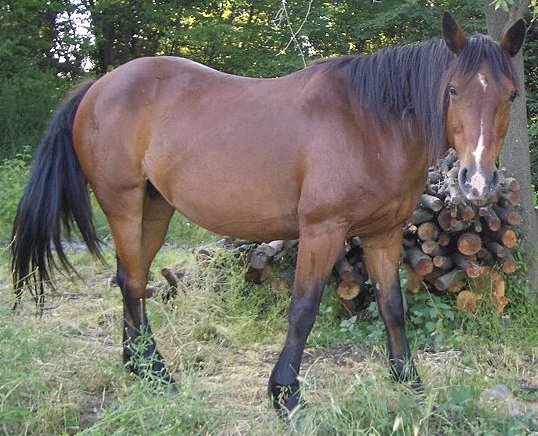Type the name of the breed you're looking for below
[wpdreams_ajaxsearchlite] Don't see the breed your're looking for? Click here and let us know!
Argentine Criollo horse
| Country Of Origin | Argentina |
| History and Background | The breed dates back to a 1535 shipment of 100 Pure Bred Spaniards - Andalusian stallions coming from Cadiz, Spain, to the Rio de la Plata imported by Buenos Aires founder, Pedro de Mendoza. In 1540, Indian hostility forced the Spaniards to abandon Buenos Aires and release 12 to 45 horses. When Buenos Aires was resettled in 1580, it is estimated that the feral horse population numbered around 12,000. Since they largely reproduced in the wild, the criollo developed into an extremely hardy horse capable to survive the extreme heat and cold, subsist with little water, and live off the dry grasses of the area. Settlers later came and started capturing horses for riding and for use as pack animals. The Native Americans had already been doing that many years before. Throughout the 19th century a large proportion of the horses were crossed with imported European Thoroughbred, coach and draft horse stallions, and a larger, coarser, long striding multi-purpose, saddle cart horse resulted. However, the crossbreeding nearly ruined the native Spanish horse type. In 1918, the Argentine breeders decided to create a pure-bred criollos registry, and the breeder's association was then formed in 1923. Much infighting occurred between the bands of Emilio Solanet and Enrique Crotto. The first promoted the Asian type crioulo and the latter the taller African type with a coarse convex head, fallen croup, thinner mane and tail. It was not until 1934 that Dr. Solanet was able to firmly take control of the breeders association. He set a new goal for the breed with a shorter, more compact stock horse which emulated the Chilean Horse breed that he admired so much. In 1938, 70% of the registered crioulos were culled because they did not possess the phenotype aspired by Dr. Solanet and his followers. The new breed standard, about which he had written in 1928, was finally made available to the public once he was assured that the breeders were more united in their breed objectives. It would not be until 1957 that the registry was closed for Argentine native breeds, but the registry has remained open for the Chilean Horse breed that has been so influential in giving shape to the crioulo as a better stock horse. Nevertheless, the breed maintains its own identity in a taller, leggier and squarer body conformation with a more angular hock that gives it the long stride it requires to cover the great distances in the flat Argentine plains known as "pampas". The modern crioulo head has a straight facial profile and a shorter muzzle with longer ears than is typical in the Chilean Horse breed. |
| Use Today | Working cow horse, Pleasure horse, Rodeo horse, Endurance racing horse |
| Height | 14 hands tall (56 inches, 142 centimeters) |
| Colour | Most colours except for pinto white pattern, dun colouring favored because it is said to be the mark of a strong animal. |
| Characteristics | The Criollo is one of the hardiest breeds ever known to man. Countless accounts of its tirelessness, endurance, and speed have been recorded and reached legendary status, making the Argentine Criollo one of the most trusted horses when it comes to long voyages. The Argentine Criollo has a concave (sometimes straight) profile, heavily-muscled back and shoulders, and a brawny neck. Its croup is Barb-like, while its legs are striped, short, and powerful. The Argentine Criollo also has a thick mane and tail. The preferred colour of an Argentine Criollo is dun, though the breed may also be seen in a variety of other coat colours. |
| Personality and Temperament | Accustomed as it is to living in the wild and being highly independent, the Argentine Criollo is a bit aloof and untrusting. However, its history shows it to be adaptable. With proper handling and lots of patience, any breeder can start an Argentine herd. |



